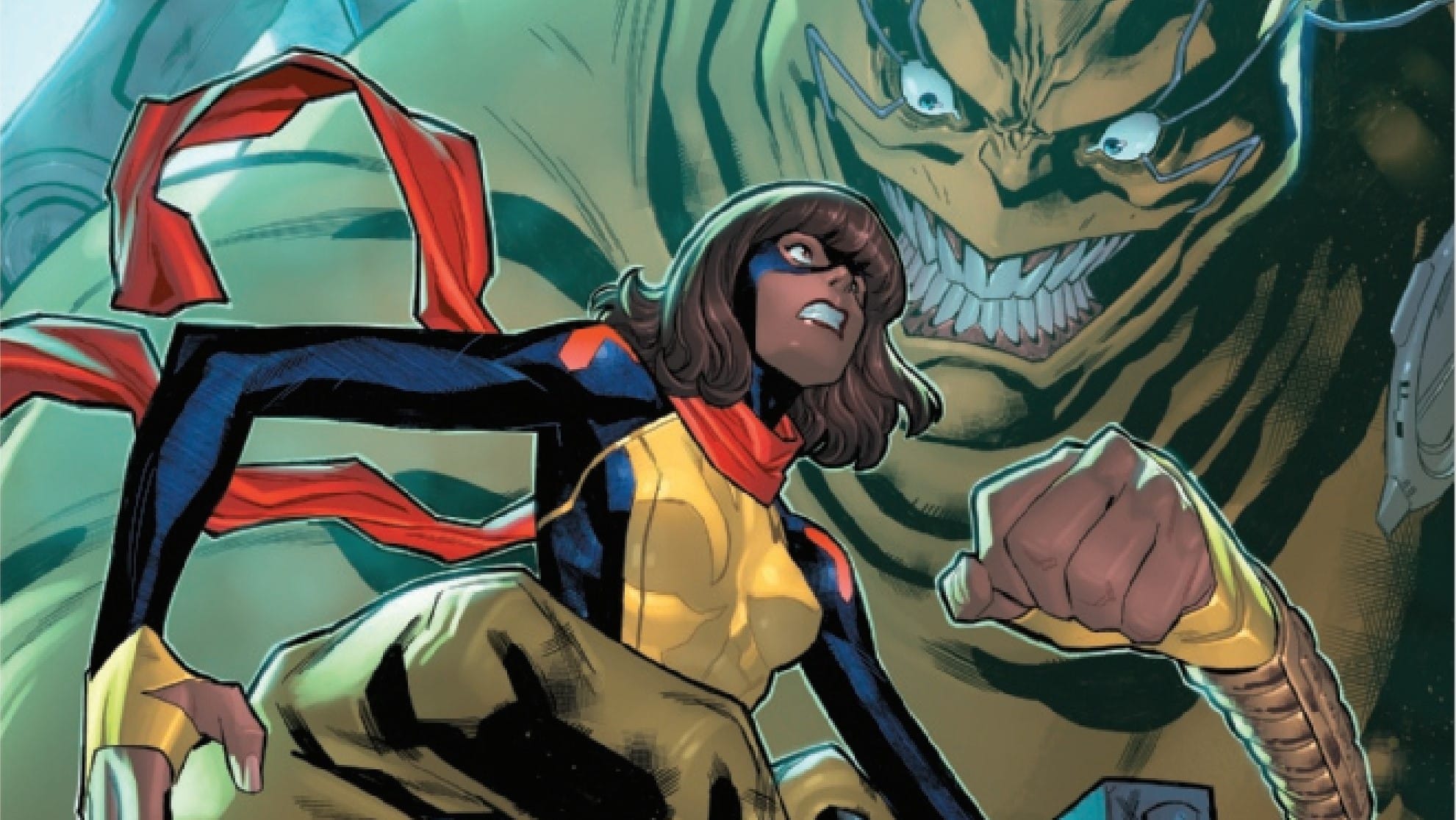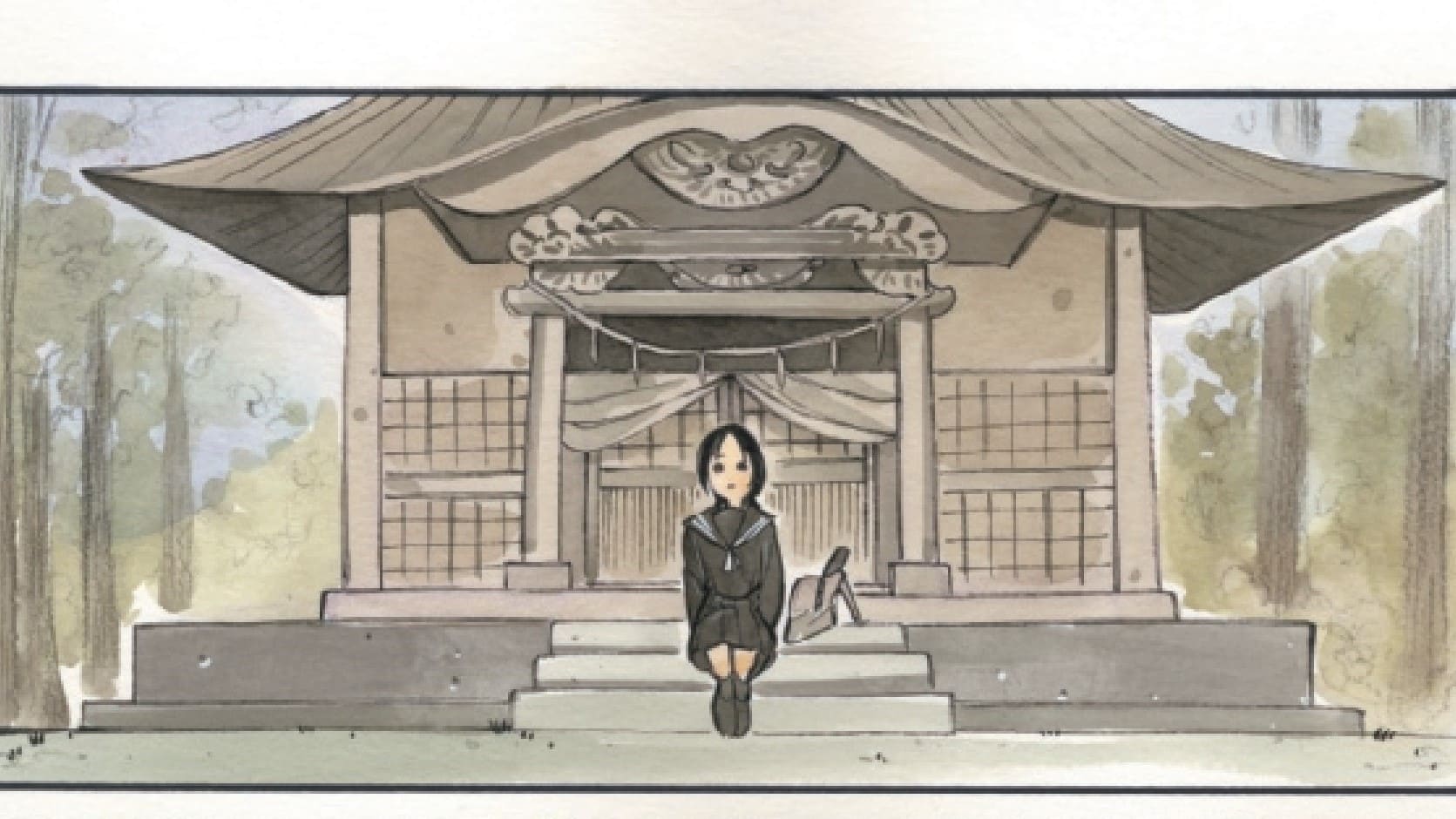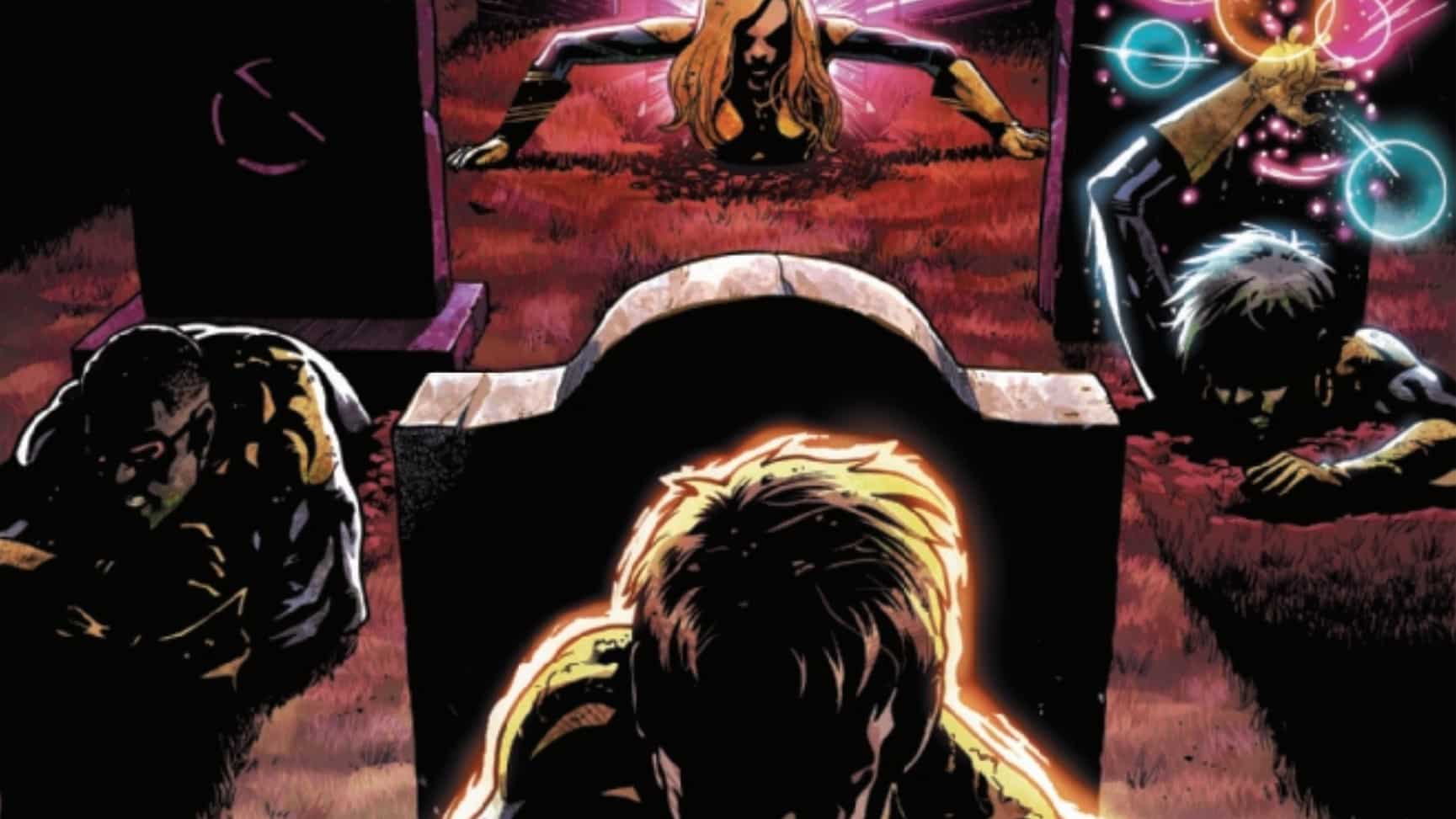Basil Hallward has painted again, and this time the painting is affecting all of Paris. It’s a strange world in Vault Comics’ The Picture of Everything Else #3 by Dan Watters, Kishore Mohan and Aditya Bidikar.
Ari Bard: More than the previous two, The Picture of Everything Else #3 feels like a bridge in many different ways. Whether it be connecting the original work of Oscar Wilde to something new, the supernatural abilities of Basil Hallward to the art criticism of Marcel Boucher, or the nature of metafiction to reality itself, Watters, Mohan and Bidikar have really started to blaze a trail into the unknown.
Matt Lazorwitz: This issue feels like the crux of the series. This is where everything that we’ve been building to in the first two issues shifts, and now we’re heading if not directly into the endgame, into the main meat of the series.
Basil and Marcel

AB: This issue begins with Basil and Marcel meeting again after three years, and clearly they both have their own agendas. The snide remarks and smug glances create an almost palpable tension. It’s interesting that we see so many characters almost constantly on the precipice of violence if they’re not jumping straight into the abyss. First we see Picasso last issue pull a gun on Marcel, and now Marcel, in turn, is prepared to pull a gun on Basil. I wonder what Watters is trying to say about criticism here, and if similar outbursts would occur today if not for the internet as a shield.
ML: The cynical part of me says it would, but I live in the country where gun culture reigns supreme, despite not being someone who embraces it myself.
This continues some of Watters’ commentary on criticism, although it is definitely more snide (which is a great word for it) than before. Picasso was angry, but Basil is … not quite dismissive, but almost amused. There are moments where there are hints of annoyance, but he’s mostly dismissive and confident in his omnipotence.
AB: Exactly. Basil sees Marcel taking the chance to meet him as a fun little adventure, and when Marcel introduces the threat of “a critic who knows what he’s talking about,” Basil laughs in his face. What could mere words from a failed artist do to someone who can alter reality with their paintings?
ML: And Marcel sees Basil’s ego and plays to it. He uses his status as a critic, or lack of status possibly, to get Basil to start talking about his past and how his powers came to be. And even though Basil says he has no felicity with words, he goes on to give an account that I think most readers have been waiting for.
Basil and Dorian

ML: This issue finally directly addresses and incorporates the events of the end of The Picture of Dorian Gray, something that’s been teased for the past couple issues. It’s a fascinating scene, because it’s so different from everything else in the book. As opposed to the lush water colors, it’s almost entirely black and white, with some splashes of red for the blood as Dorian “kills” Basil. It also uses a sketchier line in places, and some pages with a 16-panel grid. To me, it immediately evokes Alan Moore and Eddie Campbell’s From Hell, in both the line work and the claustrophobic feeling.
AB: Definitely. A lot of this flashback is rendered in charcoal, which is one of my favorite textures to see in comics, even if it’s rarely used. The splashes of blood are so emphatic and pointed. The art drives almost all of the pacing in this issue, and it is really cool to see the use of the tall vertical panels and 16-panel grids to create a sense of rhythm as well as letting the silence hang in the air after the murder takes place. Kishore Mohan has killed it throughout the series, but this is a standout issue for him. Within this flashback, we learn that Basil didn’t really die, but also that Basil’s artistic powers create a two-way street, but then Basil mentions a rather strange figure. We have Oscar Wilde showing up in the world of his own creation! What did you think of that?
ML: Yeah, that … that still has me thinking. I’ve read plenty of meta-narratives, but they tend to throw me out of the story; Stephen King adding himself to the Dark Tower series is one of those odd choices that wound up working, but took some time to get there for me, for example. Here, I’m not sure if it really benefits the narrative. Watters has been able to make a lot of the points he makes in the discourse on Wilde in the story itself. There is something of an ouroboros in a story about the artist changing the world where the creator of the fictional world also appears in it, I will admit, but I’m not sure what it does for this story other than allow subtext to become text. Watters might be playing with something here, but my brain is wandering down some paths that go to speculation rather than observation, so best to focus on what is before us.
AB: I’d have to agree. It was a very strange insert to include, and it seemed to be a sort of commentary about how even the creator of the fictional world himself was not shielded from the repercussions of a harmless but scandalously perceived lifestyle. Wilde’s insert represents a threat of cultural collapse to Basil, and it becomes his mission to stop that from happening, but it’s a puzzle piece that doesn’t seem to fit. This final connection that’s supposed to clarify Basil’s motivations to continue to change reality with art seems to confound his character for me rather than clarify it.
ML: One final, somewhat unrelated, bit about the art in this flashback: I loved the choice for how Dorian Gray is presented. He’s in a hat and a heavy coat, and his face is always in shadow or turned away from the eye of the reader, so we never see the beauty of him that Basil speaks of. It’s convenient, as Basil describes him so lovingly that no one could live up to it, but it also adds that touch of mystery that is part of the character.
AB: That’s interesting because I thought it almost had an opposite effect. At this point in The Picture of Dorian Gray, Dorian’s face carried a very sinister uneasiness that heavily obscured a lot of the beauty we saw earlier, so not showing his face and the ugliness of what he’s become preserves some of the beauty Basil spoke of in some ways. This scene adds a lot of color to the original text while connecting us to something new, which is Basil changing the entire city of Paris! What did you think when Basil, Marcel and Alphonse arrive to a blood red sky?
Basil and the Painting

ML: Ah, here we get into the deeply supernatural part of the story. Issue #1 had the mysterious murders, while issue #2 shied away from all the mystery and magic of Basil’s powers. Here they’re back in full force. I loved this; it’s such a striking visual and the kind that fills a reader with unease in the best way. This is one of those things that could only work in comics and maybe in animation with the right style. The red sky requires it to look like paint, since that’s really what it is. It’s striking, and it’s just a great example of how comics as a medium work, that blend of art and story and narrative.
AB: You’re absolutely right. There is such a powerful collaborative combination of talents on display here, and this final act pulls a lot together for me. I enjoy how the creative team is able to balance the city of Paris carrying on as though everything is normal while making it clear to the readers through the visuals that it is definitely not. We see a flipside to Basil’s powers here. While it has been made clear over and over again that art can destroy and be destroyed, we are now able to see for the first time that art can preserve. Obviously Marcel is right to question the morality of it all, and Basil is still a mass murderer, but my jaw couldn’t help but drop when those women floated safely to the ground. There is plenty of debate to be had about the ethics of preserving reality in this manner, but it is a masterfully rendered scene nonetheless.
ML: It’s absolutely stunning. And his removal of death from his Paris is on top of the fact that, not only is he preserving life, but he’s maintaining an air of calm. The morality is even stickier there; he’s basically releasing a low-level soporific throughout the city, making all the Parisians accept what is going on as if it’s perfectly natural. And he sees nothing wrong with it.
Tell me, Ari, how familiar are you with Neil Gaiman’s The Sandman?
AB: Unfortunately not as familiar as I should be and not familiar enough to discuss its relation to this issue, but I would love to hear what you have to say about it!
ML: There’s a specific issue I’m referencing, and it might be partially because I just co-reviewed Locke & Key/The Sandman #1, so I have some Sandman on the brain. Issue #50 of The Sandman is a one-off entitled “Ramadan.” In it, the caliph of an ancient Baghdad, a city of wonders, makes a bargain with Dream; Dream will take his city as it is and preserve it as a city in a bottle so it will never fade away or decline. Watters is definitely familiar with Sandman, having written the most recent volume of Lucifer, and while I don’t know if this is an intentional echo, this whole story struck me as a dark inversion of “Ramadan”: Here, it is not for the betterment and safety of the city that the preservation is done, but is instead for the ego of one man, no matter what he may say about stopping Paris from declining.
AB: That’s a really interesting analysis, and you’re definitely right about the preservation of Paris being about ego over altruism. I’m very interested in seeing Alphonse and Marcel’s actions moving forward, as they are our true main characters, but one is an adoring apprentice and the other is a critic and disgraced artist with little actual power trying to confront a reality-warping and potentially deranged man. I sense an internal struggle for Marcel in the next issue.
Miscellany
- I know it’s normal Victorian garb, but the hat and jacket that Dorian Gray is wearing are evocative to me of DC’s the Shade, a character of flexible morality born in early Victorian times who in the comics was friends with Oscar Wilde.







